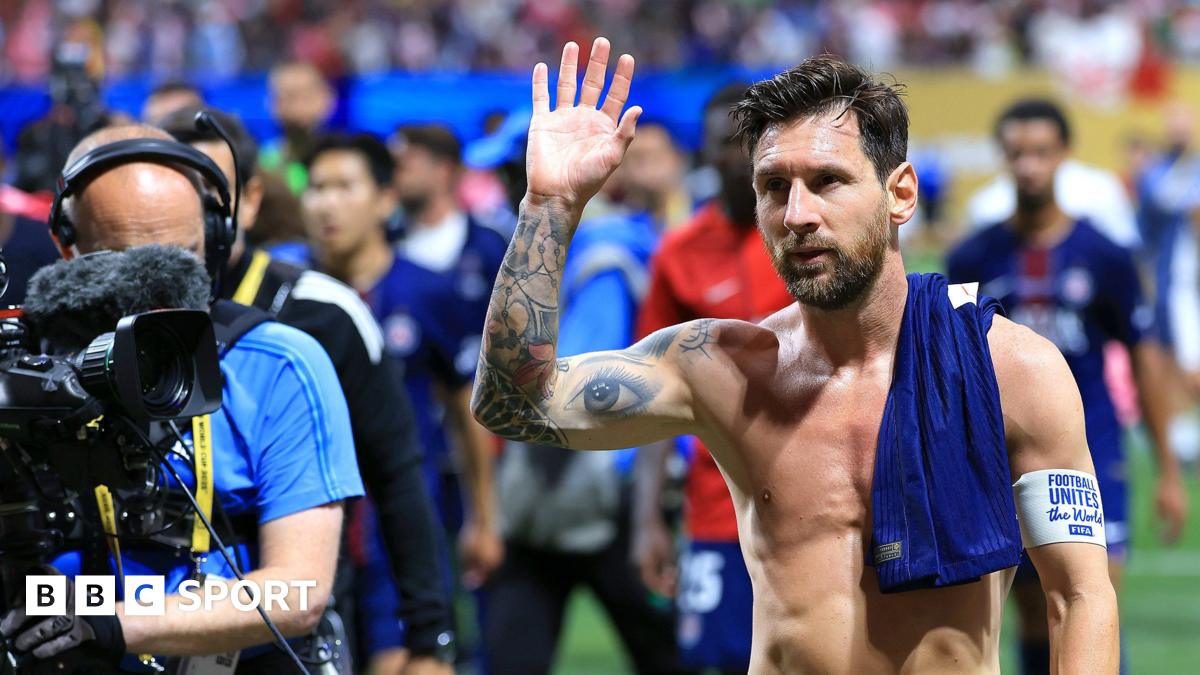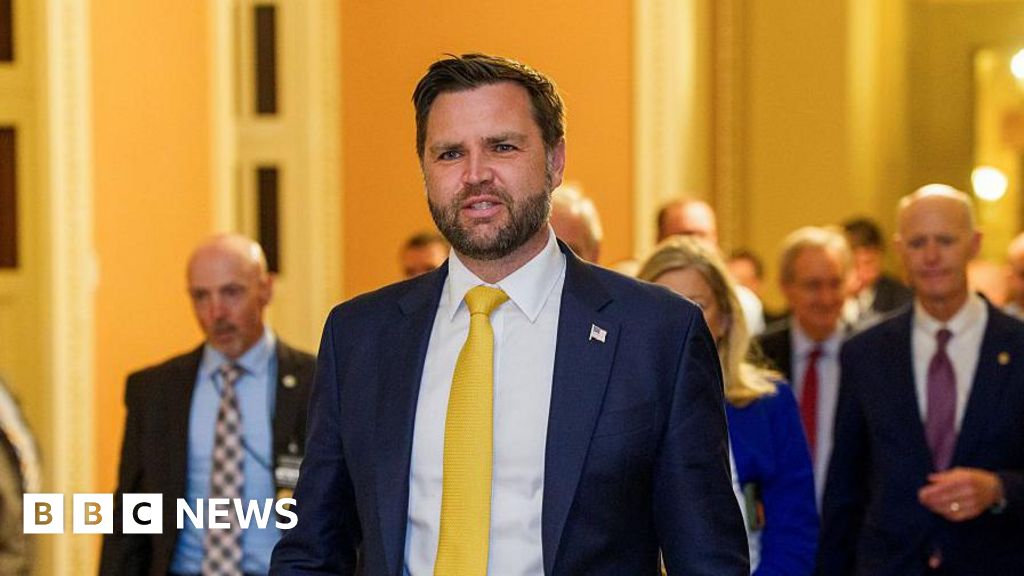The WNBA announced Monday it will expand to 18 teams by 2030, with franchises in Cleveland, Detroit and Philadelphia joining previously announced teams in Portland and Toronto, which begin play next year. The Golden State Valkyries are currently in their first season.
The past few years have seen dramatic growth for the WNBA, which until this season had not expanded since 2008. Building on the rise of the women’s college game, an ever-expanding world-wide talent pool, and a breakout star of global popularity in Indiana Fever guard Caitlin Clark, the WNBA has increased its footprint in the sports world.
WNBA commissioner Cathy Engelbert, who took over her role in 2019, said Monday that she sees this as “far more than expansion of the WNBA, it’s an evolution” and a “transformational investment in the future of women’s sports.”
With the league also in the process of negotiating a new collective bargaining agreement with the players’ union, “transformative” is an accurate buzzword for the WNBA now.
ESPN’s Michael Voepel, Kendra Andrews and Kevin Pelton look at Monday’s expansion announcement and what it means for the WNBA and the individual markets.
Why is the WNBA expanding now?
Michael Voepel: For years, the expansion question came up regularly, and the WNBA’s leaders would say the same thing: They had interested potential ownership groups in various cities but nothing was imminent. It became a boilerplate response until October 2023, when Golden State was announced as the league’s first expansion team since 2008.
That had long been a target area for the WNBA, which had lost one of its original two California-based teams — Sacramento — after the 2009 season. Expansion to Toronto, the league’s first franchise outside the United States, came in May 2024, followed by the announcement of Portland in September 2024.
The WNBA is taking advantage of the heightened interest in women’s sports in general, and women’s basketball in particular. New ownership groups in the last few years have upgraded facilities and commitment, and that drew the attention of other potential owners.
It might seem like it’s happening fast now, but sometimes that’s how growth is. There was stagnation for several years in the WNBA waiting for new investment. Consider that the New York Liberty franchise was on the selling block for more than a year before Joe Tsai and Clara Wu Tsai bought it in January 2019 for what now seems like an absurd discount price of between $10 million to $14 million. But at the time, there were many people who thought the Tsais were doing the NBA a favor by keeping a WNBA team in New York.
It’s now believed the Liberty, who won the WNBA title last season, have an estimated valuation of around $450 million. And there are multiple cities and ownership groups who wanted in on this round of expansion.
How does this expansion impact the $2.2 billion TV rights deal the league signed last year?
Voepel: That 11-year deal agreed to in July 2024 didn’t seem like it would age well then, and seems less likely to now. The WNBA broadcast rights might well be worth more than that in the coming years. The good news for the WNBA, according to sources, is that the league and its media partners can re-evaluate the rights fees after three seasons of the deal.
How does Monday’s news impact current CBA negotiations? What changes are the players’ union asking for?
Voepel: An expanding league puts the players in even stronger bargaining position because it shows how much greater interest there is in the WNBA. One of the most important improvements — charter flights for games — already came to the league last year. Getting that solidified in a new CBA has to be a major goal.
Things such as salaries, other player amenities, revenue-sharing percentage, roster sizes, the draft and the length of the season are all on the table. This WNBA expanded to 44 games this season and a best-of-seven Finals format. We probably can expect at least a 50-game regular season is on the way.
In its statement Monday, the WNBA players’ union said: “Today’s expansion news reinforces what players, fans, and countless metrics have already proven: the WNBA is thriving and a great investment. As the league grows, it’s essential we secure a CBA that ensures players fully share in the success they drive.”
Engelbert, union executive director Terri Carmichael Jackson and union president Nneka Ogwumike of the Seattle Storm all worked together on the last CBA, which was signed in 2020 before the impact of the COVID-19 pandemic hit hard. So they have a lot of familiarity with each other in negotiating. There is mutual respect on both sides, because they not only got that deal done, but they worked together with the owners to make sure the WNBA had a 2020 season in a “bubble” in Bradenton, Florida.
That wasn’t a guarantee: Had everyone involved not pushed hard for the bubble, the WNBA might have lost an entire season and the momentum that brought. Part of Engelbert’s legacy as a major sports commissioner in the United States is going to be that critical 2020 season and the growth the league has seen since.
How is this WNBA expansion different from 1998-2000, when the league grew quickly to 16 teams by its fourth season but then contracted?
Voepel: It’s a very different world in every way, from the growth of women’s sports, to how all sports programming is distributed and consumed, to other technological changes like social media. Some of the early WNBA expansion teams were considered essentially charitable risks instead of business decisions, and those franchises — not surprisingly — didn’t last.
The WNBA launched in 1997 with eight teams: Charlotte, Cleveland, Houston, Los Angeles, New York, Phoenix, Sacramento and Utah. In 1998, Detroit and Washington were added. Minnesota and Orlando came aboard in 1999. Then Indiana, Miami, Portland and Seattle joined in 2000, bringing the league to 16.
The expansion proved too fast, with some NBA franchises unprepared to truly support their WNBA franchises. Teams in Miami, Orlando and Portland lasted just three seasons; the Orlando Miracle moved to become the Connecticut Sun in 2003, but the other two folded.
Cleveland was the first of the original franchises to fold (2003), followed by Charlotte, which ended after the 2006 season, Houston (2008) and Sacramento (2009). The last two were championship franchises with good fan followings but folded mostly due to the global financial crisis of 2007-2009.
Detroit moved to Tulsa for the 2010 season, then to Dallas for 2016, where the franchise is now the Wings. Utah moved to San Antonio in 2003 and then to Las Vegas in 2018, where the franchise is now the Aces.
Expansion franchises joined the league in Chicago in 2006 and Atlanta in 2008. But until Golden State’s addition this season, those were the only expansion teams since 2000.
This new age expansion — Golden State, Portland, Toronto, Cleveland, Detroit, Philadelphia — comes at a time where WNBA franchises have been proven to have accumulating value.
Golden State paid an estimated $50 million for its franchise, while the three new franchises announced Monday will pay an estimated fee of $250 million.
Every team was owned by an NBA ownership group when the WNBA launched. Before Monday’s news, that number had dropped to six of 13 teams. Is it significant that half of the league’s teams will again be owned by the NBA?
Kevin Pelton: In some ways, Monday’s announcement is the bookend to an era that started after the 2002 season when ownership of franchises was transferred to individual teams. Before then, every WNBA team was affiliated with an NBA counterpart, and several NBA owners — including the late Paul Allen in Portland and, a year later, the Gund family in Cleveland — opted out.
Independent ownership helped keep the WNBA afloat over the last two decades and was behind five of the six championships from 2018 through 2023, with the Las Vegas Aces and Seattle Storm winning two titles each and one for the Chicago Sky. There will still be a place for those groups, certainly, but it’s now clear that NBA owners want in on the WNBA’s financial boom and have the resources and connections to outbid independent owners.
More broadly, there’s been a divide in the WNBA over the past half-decade between owners who want to minimize losses and those who want to invest heavily in the product with an eye toward long-term growth. After paying a $250 million expansion fee, it’s safe to put the three newest owners in the latter category, giving that group an overwhelming advantage heading into CBA talks that often pit owners against each other as much as they feature players against owners.
Women’s basketball players long said 144 wasn’t enough spots in the league. What does an eventual 216 player spots mean? How does that impact the CBA?
Kendra Andrews: Engelbert has said she views the addition of expansion teams as the correct way to add the number of WNBA jobs rather than increasing roster spots to preexisting teams. This, she said, is more cost-effective to the league since adding individual players doesn’t create additional revenue, but more teams do. So, yes, the addition of five WNBA teams over the next five years will create more jobs and create more money.
However, it doesn’t address all of the concerns the players have regarding roster construction. WNBA roster sizes have been capped at 12 players since 2014. Several teams have 11 players on their rosters, depending on their salary cap situation. But injuries are increasing, and the length of the season is expanding.
The current CBA provides hardship exceptions for teams to add extra players when they fall below 10 active, but the ongoing negotiations are fighting for a simpler system that also creates more opportunity.
This might also be the opportunity to change the rules around draft eligibility. Right now, those eligible for the draft must be college seniors, juniors who turn 22 in the year of the draft or who will graduate within three months of the draft, and international players who turn 20 in the year of the draft.
What did the WNBA look like in Detroit and Cleveland in previous stints?
Voepel: The Detroit Shock were the first team to shake up the quickly established powers in the WNBA’s first six seasons: Houston, Los Angeles and New York. The Comets won the first four championships and the Sparks the next two. The Liberty were runners-up four times.
The Shock started 0-10 in 2002, prompting a coaching switch that changed everything for the franchise and the WNBA. Bill Laimbeer took over as coach and general manager, bringing his NBA playing experience and “Bad Boys” style to the WNBA. He finished out 2002 at 9-13, but had two huge talents to build around in former first-round picks Swin Cash and Deanna Nolan. Then the Shock added Ruth Riley in the dispersal draft from the short-lived Miami Sol, and the No. 3 pick in 2003, forward Cheryl Ford.
With that core they beat two-time defending champion Los Angeles in the 2003 WNBA Finals, then won championships in 2006 and 2008 with the addition of veteran Katie Smith. They lost in the 2007 Finals to Phoenix.
The Shock’s demise was as quick as their rise. Pistons and Shock owner Bill Davidson died in March 2009. Laimbeer left after just three games in 2009, replaced by assistant and former Pistons teammate Rick Mahorn. After the 2009 season, the Shock were sold to an ownership group in Oklahoma and moved to Tulsa. Davidson’s estate sold the Pistons in 2011.
So there were loyal, heartbroken Detroit Shock fans who had a three-time champion suddenly taken away.
Cleveland was a different scenario: The team didn’t have much time to establish a foothold in seven years. The Rockers made the playoffs four times before the franchise folded. Cleveland has hosted two Women’s Final Fours (2007, 2024) since the Rockers folded in 2003. So the region has shown an interest in women’s hoops over the last two decades, which should bode well for the re-introduction of the WNBA.
What did we learn about Philadelphia as a pro women’s basketball city in the ABL?
Voepel: Dawn Staley is likely the first name people think of with this city and women’s hoops. The South Carolina coach is a Philadelphian who played for the ABL’s Richmond/Philadelphia Rage franchise from 1996 until the league folded during the 1998-99 season.
The Rage had just one full season in Philadelphia, playing at the Palestra from 1997-98, when they went 13-31. Under coach Anne Donovan, the Rage started 9-5 in 1998-99 before the ABL ceased operations in December 1998.
So the Rage didn’t have the opportunity to leave a footprint in Philadelphia. But with the city’s impact on women’s basketball — UConn’s Geno Auriemma and former Notre Dame coach Muffet McGraw are among many along with Staley who are from the Philly area — there is a lot of history there to connect with for a new WNBA franchise.
How will the expansion teams be built? How long might it take for them to become competitive?
Andrews: Like with the Valkyries, and the upcoming expansion teams in Portland and Toronto, there will likely be an expansion draft where Cleveland, Detroit and Philadelphia can select players from preexisting teams in the WNBA.
With each of those teams launching in different years, their expansion drafts could look similar to the Valkyries, where they were the only team selecting players so they didn’t have to prepare for what another team would want to do. While details for Portland and Toronto’s expansion draft have not been released, they’ll likely take turns making selections.
In the 2024 expansion draft for Golden State, each of the other 12 teams could protect up to six players on their rosters that could not be selected by the Valkyries. The last time there was an expansion draft for multiple teams was in 2000 for the Indiana Fever and Seattle Storm, as well as the now-defunct Miami Sol and Portland Fire. In that draft, other teams protected eight players, and the new teams each selected six players and then filled out their rosters in the draft, in free agency and via trades.
Golden State’s strategy in building its team was to rely on established sixth women, as well as a heavy international presence. The Valkyries didn’t land any of the top free agents or opt to select their face of the franchise through the draft. It’s paid off as the Valkyries have already won more games than their preseason projection. But general manager Ohemma Nynanin said she doesn’t believe this will necessarily build a blueprint for other expansion teams.
Source link


















